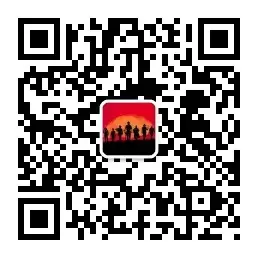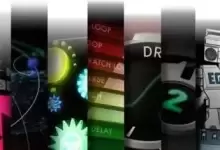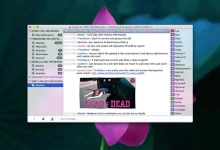一款优秀的显示控制器。QLab Pro Mac破解版提供了创建复杂设计所需的工具与功能,让您的音频和视频内容生动呈现。您可在数秒内构建复杂设计。入门简单——只需将文件拖入,按下”GO”。随后即可添加淡出音量、动画视频或添加音视频效果等命令。
QLab 5.x Pro Bundle | MacOSX | 18.3 MB
QLab为您的Mac提供现场演出控制。为戏剧、舞蹈、作曲、装置艺术等创作媒体设计。在单一工作区回放音频、视频和MIDI。QLab 4包含全新灯光(Light)模块、大幅升级的iOS版QLab Remote及40多项新功能。
设计工具
– 支持无限提示列表(Cue List)及无限提示(Cue)
– 支持无限提示车(Cue Cart),每车1至64个按钮
– 在编辑模式(Edit Mode)设计,在演出模式(Show Mode)运行
– 非破坏性设计工具绝不修改原始媒体文件
– 可撤销所有编辑操作
– 本地”试演”提示,不会将音视频/灯光输出至舞台
– 提示模板与工作区模板
– “录制提示序列”工具:捕捉时间线用于后期复现
– “粘贴提示属性”工具:选择性复制属性到其他提示
– 提示列表与提示车的文本搜索
– 强大的AppleScript与开放声音控制(OSC)API
– 全面状态窗口(Status Window)辅助故障排除
– 通过QLab Remote实现高效远程编辑
灯光控制
– 控制无限Art-Net DMX域
– 创建无限灯光设备(支持自定义命名)
– 创建无限灯光群组(如”全部”、”台右”、”LED灯”)
– 支持常规调光器及含多参数的复杂灯具(兼容百分比参数/8位/16位DMX参数)
– QLab式电平渐变:轻松构建可复用灯光场景(Look)。灯光提示仅修改设定值,维持其余状态
– 链式灯光提示构建复杂序列,单次”GO”触发连锁反应
– 灯光提示支持复制/粘贴/重排/暂停/恢复/随时停止
– 提供线性/S曲线/自定义形态渐变
– 通过灯光仪表板(Light Dashboard)实时监控所有灯光电平
– 仪表板实时编辑支持渐进式数值更新
– 试演窗口(Audition Window)预览灯光效果,关闭后即时恢复现场状态
– 仪表板调整后:
• 新建仅含变更的提示
• 新建全设备提示
• 更新最后运行的提示
• 追溯各设备最近修改记录
– MIDI控制器映射灯光指令(控制仪表板或单个提示)
– 支持电动MIDI硬件反馈(”电动推子”)
– 智能灯光指令语言:自动补全、设备/群组寻址、范围指定、临时编组、历史记录
– 多视图切换:推子/色块/原始指令文本
– 键盘输入或鼠标拖拽操控灯光
– 轻松删除提示内灯光指令(支持撤销)
– 推子视图可将群组指令扩展为独立设备
– 推子视图显示各灯光实时电平指示器
– 推子视图支持多选联调(Gang)
– 快速识别群组设备统一/混合电平状态
– 批量编辑共享指令(或同时添加新指令)
– AppleScript脚本实现算法生成灯光序列
– OSC协议控制灯光仪表板与单个提示
音频
– 最高64通道音频输出
– 支持24通道音频文件
– 支持24通道实时音频输入
– 音频波形视图
– 无限媒体切片循环播放
– 多提示间采样级同步精度
– 声像定位与音量渐变
– 自定义输出通道命名
– 编辑音频设备路由
– 全提示类型应用音频效果
– 提示输出/设备输出端效果器处理
– 动态渐变音频效果
视频
– 全屏/自定义视频提示(Video Cue)窗口
– 视频渐变动画
– 1000层视频叠加
– 多投影仪遮罩与边缘融合
– 几何变形与梯形校正
– 基础视频效果器
– 摄像机提示(Camera Cue)实时捕获
– Syphon输入/输出
– Blackmagic输入/输出
– 文字标题提示(Text Cue)
演出控制
– 网络提示(Network Cue)发送OSC/UDP消息
– 一维/二维OSC消息渐变
– 工作区实时数据注入OSC消息
– MIDI提示发送MIDI及MIDI Show Control指令
– MIDI文件提示回放MIDI序列
– 脚本提示运行AppleScript
– 时间码提示生成LTC/MTC输出
– 入站LTC/MTC时间码触发提示列表
– OSC与MIDI远程控制
系统要求: Intel 64位处理器,OS X 10.10或更高版本

一款优秀的显示控制器。QLab Pro Mac破解版提供了所需的工具和功能,可以创建复杂的设计,使您的音频和视频内容生动起来。您可以在几秒钟内创建复杂的设计。入门简单,只要拖动一个文件中,按“GO”。从那里,添加命令淡出音量,动画视频,或添加音频和视频效果。
QLab 5.x Pro Bundle | MacOSX | 18.3 MB
QLab provides live show control for your Mac. Create media designs for theatre, dance, composition, installation, and more. Play back audio, video, and MIDI from a single workspace. QLab 4 includes an all-new Light cue, a huge update to QLab Remote for iOS, and over 40 other new features.
Design Tools
– Unlimited Cue Lists with unlimited cues
– Unlimited Cue Carts with 1 to 64 buttons per cart
– Design in Edit Mode and run your performance in Show Mode
– Non-destructive design tools never modify your media files
– Undo any edits
– “Audition” cues locally without sending audio, video, or lighting output to the stage
– Cue templates and Workspace templates
– “Record cue sequence” tool, to capture timing and play it back again the same way later
– “Paste cue properties” tool, to selectively paste properties from one or more cues onto other cues in your workspace
– Text search of cue lists and cue carts
– Extensive AppleScript and OSC APIs
– A comprehensive Status Window to guide troubleshooting
– Powerful and painless remote editing via QLab Remote
Lighting
– Control unlimited Art-Net DMX universes.
– Create unlimited light instruments (like channels, but can be named anything, not just numbers).
– Create unlimited light groups to collect related instruments together, like “all”, “stage right”, “LEDs”, “floor”, or “floor front left”.
– Use both conventional dimmers and more complex lights with multiple parameters (includes support for percentage-based parameters, as well as both 8-bit and 16-bit direct DMX parameters.)
– QLab-style levels fading: it’s simple to build looks and effects that you can layer and reuse. A Light cue changes only the levels you set in the cue, and leaves the rest unchanged.
– Build sophisticated lighting designs by chaining Light cues together to build complex cue sequences out of simpler parts, then trigger the sequence with a single “GO” like a chain of dominoes.
– As with all cues in QLab, Light cues can be copied, pasted, reordered, paused, resumed, and stopped at any time
– All QLab fade curves are available for Light cues; including linear, s-curve, or totally custom shape fades.
– See and manipulate the current levels of all your lights using the Light Dashboard.
– If you need to sneak in live edits from the Dashboard, you can optionally tell QLab to apply the new values “over time” so they’ll fade in smoothly.
– Open the Audition Window to view the effects of light cues “blind” in the dashboard. Close the Audition Window, and the dashboard will instantly revert back to show the live state of your lights.
– Adjust your lights in the dashboard, then:
-Create a new cue with just the changes,
-Create a new cue with all instruments,
-Update the last-run light cue with the changes, or
– Trace back the edits to each cue that most recently modified each instrument.
– Map your favorite MIDI controller to light commands, for editing either the light dashboard or individual cues.
– For motorized MIDI hardware, QLab supports MIDI “feedback” from the light dashboard and individual light cues. (Aka “flying faders”.)
– Use QLab’s powerful light command language, with autocompletion, instrument or group parameter addressing, ranges, ad-hoc groups, and command history, to efficiently edit both the light dashboard and individual light cues.
– View light cues as sliders, tiles, or raw command text at any time.
– View the Light Dashboard as sliders or tiles.
– Edit lights via keyboard entry (on the command line) or with the mouse (via clicking and dragging.)
– Easily delete individual light commands from any cue, and of course undo any edits.
– In slider view, expand group commands into all the individual instruments currently in the group.
– In slider view, indicators show the current live value of each light in a cue.
– In slider view, select multiple commands to temporarily “gang” them, so you can adjust them up or down together.
– Quickly see when a group of instruments is set to all the same level or a mix of different levels.
– Batch-edit multiple light cues by selecting them and then simply editing any light command they all share. (Or adding a new command to all of them at once.)
– Use AppleScript, either externally or via Script cues, for advanced programming techniques like algorithmically generating a series of Light cues.
– Control both the Light Dashboard and individual Light cues via OSC messages.
Audio
– Support for up to 64 channels of audio output
– Support for up to 24-channel audio files
– Support for up to 24 channels of live audio input
– Audio waveform view
– Unlimited slices of your media files for looping and vamping
– Sample-accurate playback synchronization across multiple cues
– Audio panning and volume fading
– Customize output channel names
– Edit audio device routing
– Audio effects on any cue
– Audio effects on cue outputs
– Audio effects on device outputs
– Fade audio effects dynamically
Video
– Full-screen or custom geometry for Video cues
– Fade and animate videos
– 1000 layers of video
– Masking and edge-blending across multiple projectors
– Warping and keystone correction
– Basic video effects
– Live camera input with the Camera cue
– Syphon input & output
– Blackmagic input & output
– Text & titles with the Text cue
Show Control
– Send OSC or UDP messages using the Network cue
– Fade your OSC messages over time, in 1D or 2D
– Inject live values from your workspace into outgoing OSC messages
– Send all MIDI and MIDI Show Control messages with the MIDI cue
– Send MIDI messages by playing MIDI files with the MIDI File cue
– Run your own AppleScripts with the Script cue
– Generate LTC or MTC output with the Timecode cue
– Trigger cue lists from incoming LTC or MTC timecode
– Remote control via OSC and MIDI














